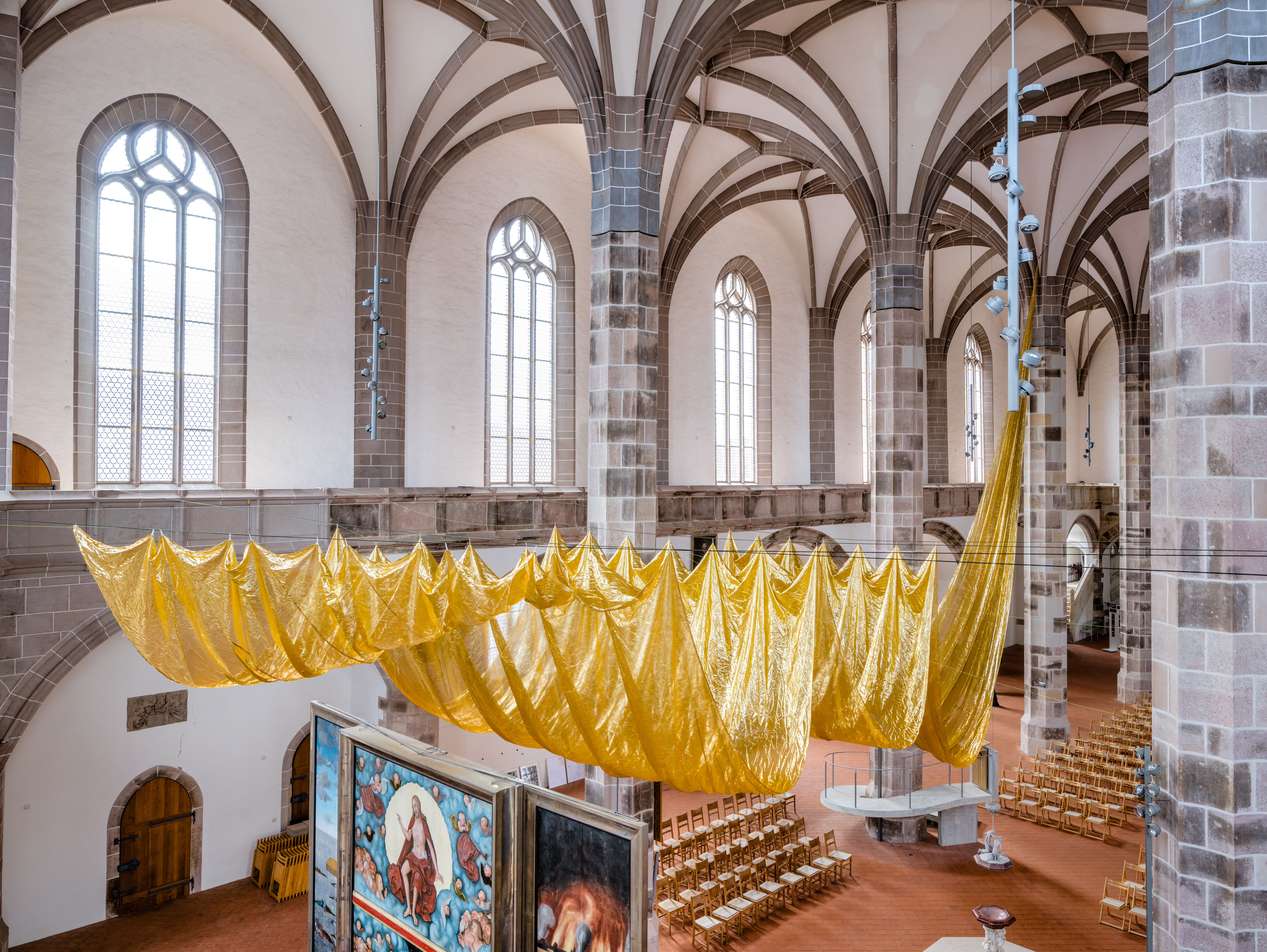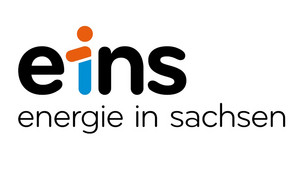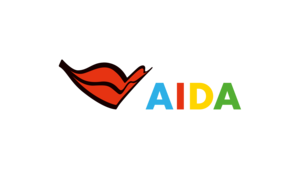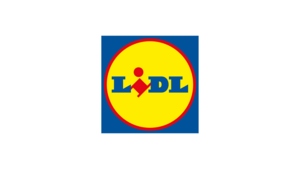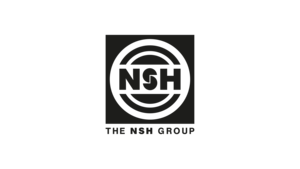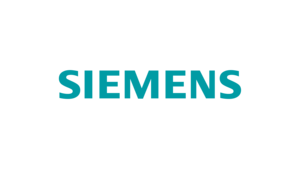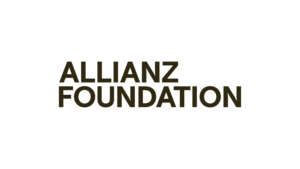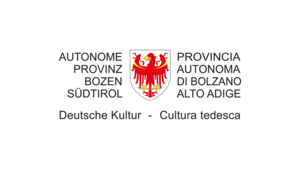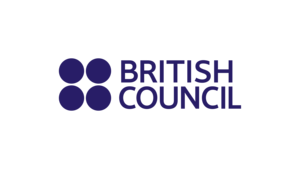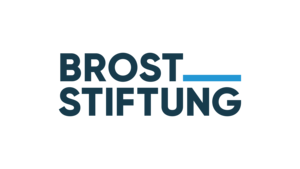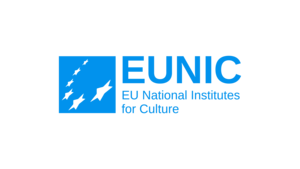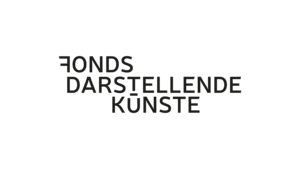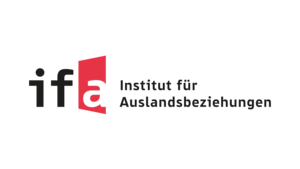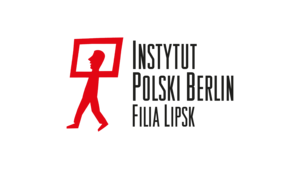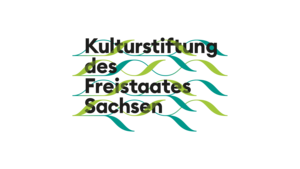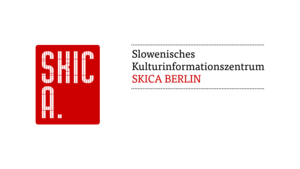Together with the European Capital of Culture Chemnitz 2025 gGmbH and the Regional Management European Cultural Region Chemnitz, the PURPLE PATH team and local partners, the churches in the region are organising the exhibition series ALTARVERHÜLLUNGEN - INTERVENTIONS ZUR PASSION.
The participating artists are taking up the tradition of covering the altars during the Easter festivities between Ash Wednesday and Easter Sunday. Instead of black or traditional Lenten cloths, they develop their own formats and use different media such as textile sculpture, drawing or installation.
The artworks created as altarpiece coverings become part of the liturgy of the churches on the one hand, while on the other they are freely accessible to the public, creating public spaces for art.
Inspired by the Passion 2023 intervention, St Mary's Cathedral in Freiberg is once again hosting an altar wrapping this year. Curated by the local parish, another work by Michael Morgner entitled "Ecce Homo - Siehe der Mensch" will be exhibited.
The works of art:
Langenstriegis Church // An der Kleinen Striegis 49 - 09669 Frankenberg/Sa. - OT Langenstriegis
Jessica Buhlmann was born in Potsdam in 1977. She studied as a master student with Klaus Fußmann and Henning Kürschner at the Berlin University of the Arts; today she lives and works in Berlin. She writes about her work for the Evangelical Church in Langenstriegis:
'The textile sculpture falls like a curtain of moving lines and surfaces in front of the altar. The resulting structure in the liturgical colours of white and violet, interwoven with the colours of Good Friday, red and black, is reminiscent of a church window. The altar is not completely covered by the work; open areas between the surfaces allow it to partially shine out - a view and hope for what is to come.
St Wolfgang, Schneeberg // Kirchplatz 16 - 08289 Schneeberg
Ulrich Reimkasten was born in Lichtenstein/Sa. in 1953. He studied textile design at the University of Applied Arts in Schneeberg and tapestry design at the University of Industrial Design in Halle under Willi Sitte and Inge Götze, among others. The winner of the Halle Art Prize was Professor of Painting and Textile Arts at Burg Giebichenstein University of Art and Design Halle from 1995. Today he lives and works in Wettin-Löbejün. He writes about his work for the church of St Wolfgang in Schneeberg:
The veiling of the Cranach altar comes in the form of a golden cloud. The textile staging creates distance from the splendour of the altar. The cloud in the Bergmannsdom is a drapery in gold, the colour of immateriality. The drapery refers to the expressive formal language of vestments, particularly in Gothic painting, as we also find in Cranach's work.
St Mary's Church, Stollberg // Herrenstrasse 32 - 09366 Stollberg
Katja Lang was born in 1968 in Karl-Marx-Stadt; after studying architecture at the TU Dresden, she studied painting/graphics at the Dresden Academy of Fine Arts and was a master student of Elke Hopfe. She now lives and works in Berlin. She writes about her work for St Marien in Stollberg:
'An Ore Mountain landscape establishes the reference to Stollberg in the Ore Mountains. The hiker is a reference to the Saxon pilgrimage route, the fog becomes synonymous with the unknown, the search for which drives us forward on the "path of life". The hiker goes through an unpleasant time in the sleet and yet he hopes that his circumstances will improve at the end of the path. This hope is his motivation.
The PURPLE PATH is the art and sculpture trail of the European Capital of Culture Chemnitz 2025, connecting people from Chemnitz and 38 locations with their guests. Until 2025, artists from all over Europe will be working in the Ore Mountains, Central Saxony and the Zwickau region. Many churches are taking part in the PURPLE PATH with church services, art projects and events.
